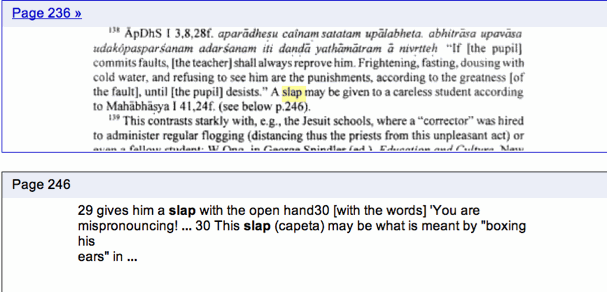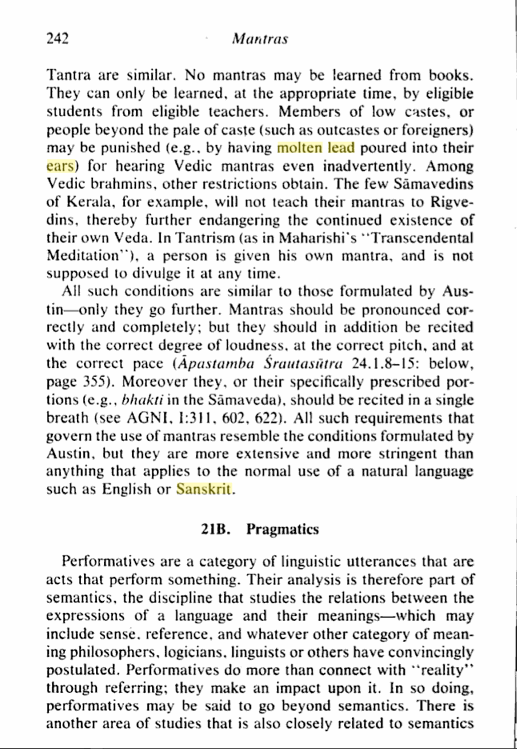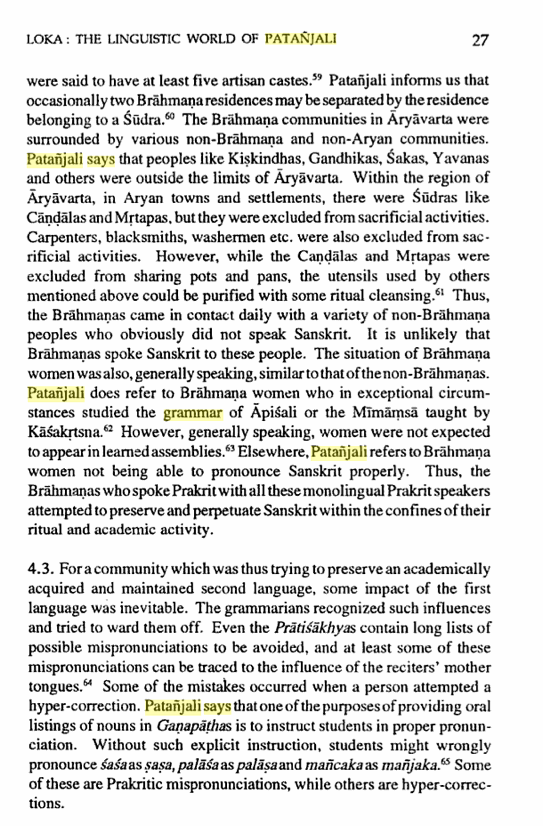Be at Home With Mantras
Sanskrit has a huge vocabulary to describe delicious states of consciousness. Play with the sounds, make friends with them.Let’s not idealize the ancients as saints, just because they lived back in the day. Children were sent away to live with the teacher, to learn Sanskrit chanting, and they were slapped or beaten whenever they mispronounced a word. It was held to be worth it, because the most important thing in the world was to do the prayers properly, and digital recording hadn’t been invented yet.

Foreigners Should be Punished for Hearing the Mantras
Foreigners, if they even hear the Vedic mantras inadvertently, should be punished by having molten lead poured into their ears:
From Education in ancient India By Hartmut Scharfe
Students Should be Slapped for Mispronouncing:

Thoughts to consider:
A language is not sacred if it instills fear.
Sanskrit has sounds that we don’t have in English, ways of moving the tongue in a kind of tongue-asana. But you can approximate the sounds, and feel your way into them. Learn to be relaxed with Sanskrit, and let your body like the sounds and resonances.
Playfulness is sacred.

Sanskrit is many, many things: a dead liturgical language, a crystallized version of how priests spoke in ceremonies two thousand years ago; an object of historical criticism by several hundred academic scholars who try to enter the semantic world of a long-dead civilization; the language of mantras, and also a rich source of vocabulary for the living languages of today. It is estimated that up to half of the vocabulary of the languages spoken in India comes from Sanskrit, even though only about one in 20,000 is fluent in Sanskrit. More importantly, Sanskrit is the closest thing we have to the ur-speech, the innate natural language of the body, where words resonate with implicit meaning. Sanskrit is also the language of mantras.